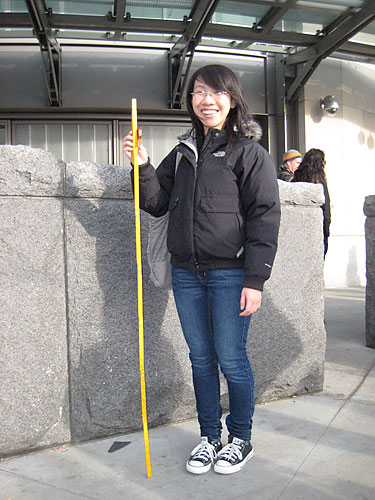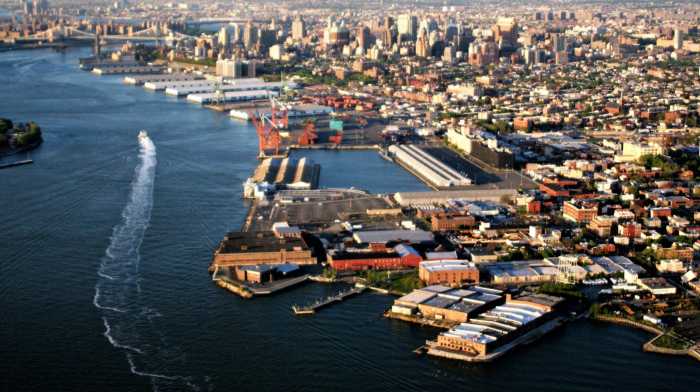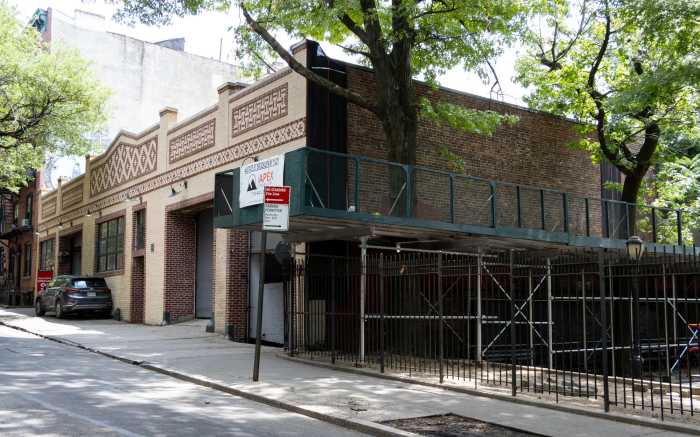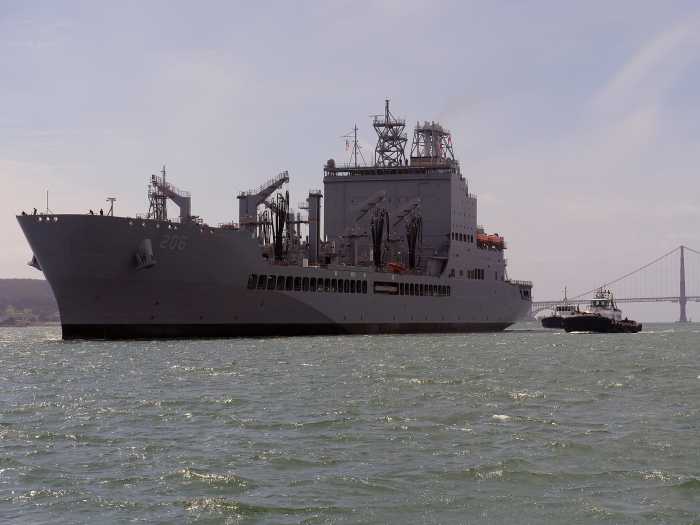The controversial, tomb-like bollards around the new Long Island Rail Road terminal at Atlantic and Flatbush avenues — which were supposedly installed at the behest of the police — are actually excessive under NYPD counter-terrorism standards.
The department’s 2009 report, “Engineering Security: Protective Design for High-Risk Buildings,” advises that bollards “measure between 30 and 36 inches in height” and be spaced 48 inches apart.
But the granite-covered sarcophagi in front of the LIRR’s newly built Atlantic Terminal are 50 to 52 inches high — and they are far bulkier than even the most-rigid barricades in the NYPD handbook. And in some places, they are 36 inches apart.
Outrage about the massive obstruction around the new $106-million terminal was reported by The Brooklyn Paper earlier this month. But last week, Streetsblog, a Web site devoted to transportation and so-called “livable streets,” got out the measuring tape and revealed the LIRR’s security over-reach.
The Brooklyn Paper’s own measurements confirmed the Streetsblog account.
In an interview at the terminal’s opening earlier this month, LIRR President Helena Williams admitted that the large bollards were not in the original renderings of the terminal, but were added after “the NYPD … assess[ed] the risks and [told] us what kind of security we need.”
This week, the LIRR did not answer questions about why the agency would install bollards that greatly exceed the NYPD standards that Williams cited.
The strongest bollard cited in the NYPD security report is classified by the State Department as K-12, capable of stopping a 15,000-pound truck going 50 miles per hour.
Pictures of K-12 barriers downloaded from the Web sites of bollard manufacturers show that such strength can be had without nearly as much bulk as the LIRR is deploying at Atlantic Terminal.
One such picture shows an unobtrusive line of K-12 bollards in front of the Singapore legislature — presumably a high-risk target.

It is unclear from the NYPD security report if the Long Island Rail Road terminal even fits the definition of such a “high-risk” site, which requires 288-648 points on the department’s “risk score” worksheet, a calculation that takes into account a site’s location, strength, importance and renown.
The terminal is a vital transportation hub that has close to 60,000 users a day, and would cause severe economic loss if damaged in a terror attack. It was also the target of a prior terror plot in the late 1990s.
But it is not currently surrounded by other high-risk targets — as many Manhattan buildings are — and it is not an internationally known edifice, another factor involved in the scoring.
“There’s just something so absurd about it,” said Aaron Naparstek of Streetsblog, who opposes the massive barricade. “They’ve nearly made the train station impenetrable to their own customers. They’ve literally turned our community’s public space into something that looks like a tomb.”
But the look of the terminal is only one problem, he added.
“These poorly designed barriers are, very literally, an example of the security bureaucracy ruining our public realm,” he said. “I also have a ‘Brooklyn guy’ critique: I don’t think the LIRR ever would have dared to implement such a thoughtless and inane design in Lower Manhattan or Midtown. They’d have never gotten away with it.”
The LIRR’s decision to ring a new building with a previously unannounced security perimeter led The Brooklyn Paper to file a Freedom of Information Law request with the Empire State Development Corporation for information about what the agency is planning at the proposed Barclays Center, the basketball arena across Atlantic Avenue from the LIRR terminal.
Current renderings show a thin line of bollards, but, as the Long Island Rail Road proved this year, plans are sometimes altered without informing the public.
So far, the agency has denied The Paper’s request.

























